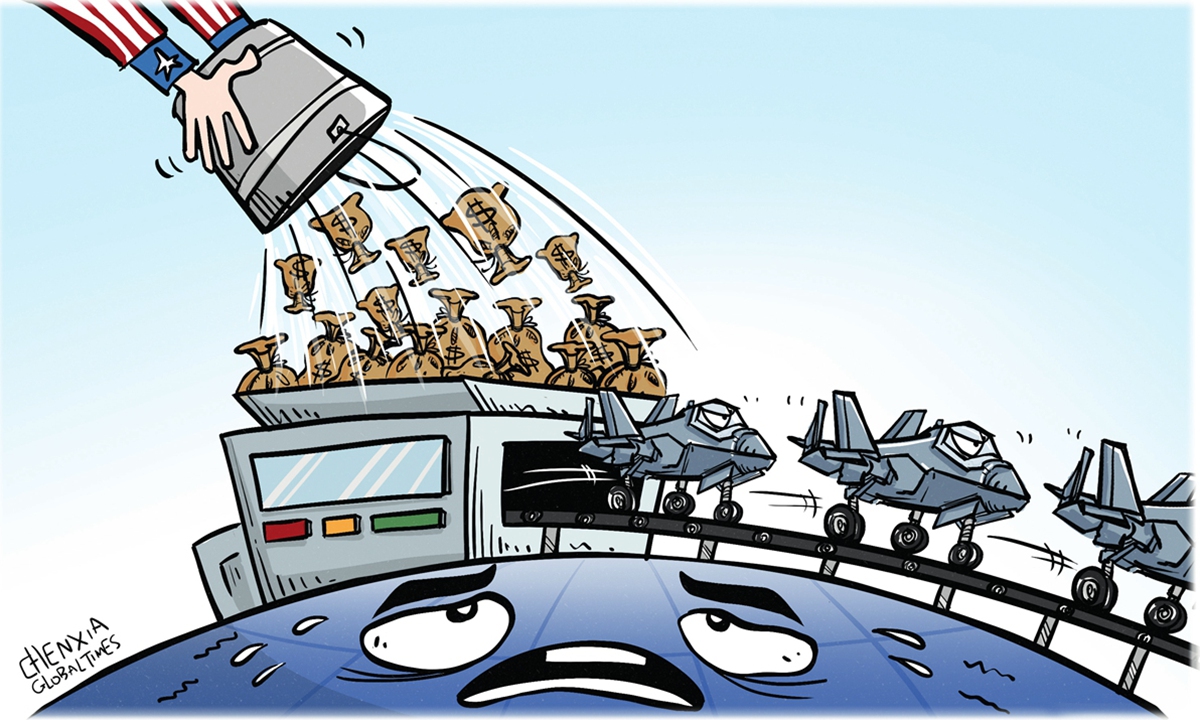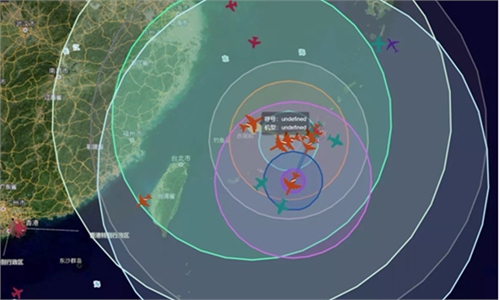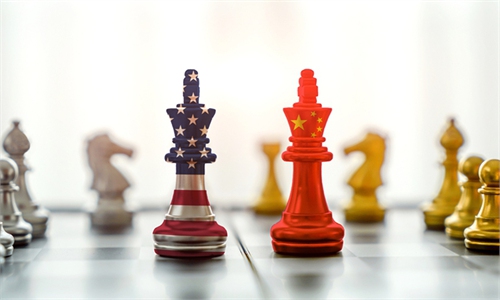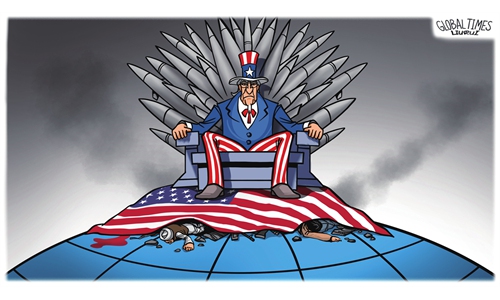
Illustration: Chen Xia/GT
How great is the risk of war in the world? It is easy to answer. One only needs to look at the total amount of US arms spending right now to make a roughly correct judgment.
The US has the strongest military industry in the world, with the ability to extend its long arms of the military into any corner of the globe quickly, and often volunteers to act as the world's policeman.
The Biden administration just released a budget for US military spending in 2023 of $842 billion, four times the military spending of China. But moreover, the fundamental difference is that China adopts a defensive policy, while in the US foreign military strategy, pre-emption is a principle.
Higher US military spending indicates a higher risk of war in the world.
Singapore's Foreign Minister Vivian Balakrishnan recently said that increasing global military spending shows that the last seven to eight decades of the peace dividend after the World War II is over.
To find out the reason, we must first make clear who is profiting the most from the global increase in military spending, and whose interests the disappearance of the peace dividend best serves.
A large portion of the Biden administration's budget will be spent on developing new weapons and military technology, especially offensive and precision weapons for pre-emptive strikes, to ensure absolute US leadership in the armament field, and to meet export needs.
Naive people will ask why the US government can't put part of the money into boosting the economy directly or improving people's lives. It is determined by the US economic and political structure and the military-industrial complex's interest. No matter who is in the White House, such a situation is unlikely to change.
The military-industrial complex is seen as a core part of American policymaking and more - a "cash cow" for the big business of the American empire.
The way the US economy works and its hegemonic position dictate that arms exports are a significant channel through which the US benefits globally.
Over 40 percent of the world's exported arms come from the US, the US State Department said in January this year, sales of US military equipment to foreign governments rose 49 percent to $205.6 billion in the latest fiscal year.
For weapons to sell more and at higher prices, the preconditions are more tensions around the world and more risk of war, so there will be a growing, expanding market for weapons. The more conflict-ridden the world becomes, the more reason there is for the US to expand its arms exports and increase its military deployments worldwide.
To whom and how much the US sells weapons will, on the one hand, increase regional tensions and, in turn, spur further purchases.
According to SIPRI Yearbook 2022, current US arms policy and practice too often fuel war rather than deterring it. Roughly two-thirds of current conflicts - 34 out of 46 - involve one or more parties armed by the US.
Last year, European countries spent significantly more on US weapons due to the war between Russia and Ukraine, allowing the US military-industrial complex to make a solid profit. Take US arms sales to the island of Taiwan. The total value of US weapons shipments to the island exceeded $70 billion by May, 2022.
In the eyes of the world, more weapons sales may mean weaker peace, but for the US, they could generate revenue. Research and development of sophisticated weapons can drive US manufacturing to the high end. They can ultimately ensure US military power and high-tech global dominance. Especially at a time when the US economy is on the verge of a hard landing, military spending will play an even more critical role.
The big bosses on Wall Street and the White House see the opportunity to make money from global conflicts, and the world sees the growing conflicts and rising risks of war. Can the US-designed "order" be maintained this way without any change?



